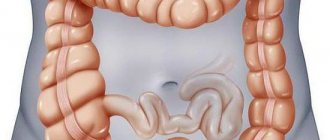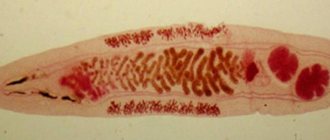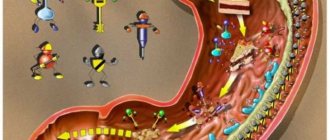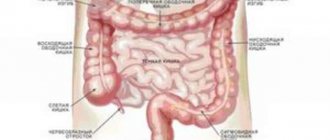About salmonellosis
Salmonellosis infection is caused by pathogenic Salmonella bacteria, which enter the body through the gastrointestinal tract. The disease is characterized by damage to the gastrointestinal tract and the development of general intoxication.
Salmonellosis - what kind of disease is it? This is an acute intestinal infection that occurs in humans and animals. The development of the disease differs in each specific case and depends on many factors. Sometimes it is asymptomatic or leads to toxic damage and dehydration shock.
Infection with salmonellosis in most cases occurs through consumption of contaminated food. Pathogenic bacteria are highly resistant to adverse effects. They are able to withstand low (up to – 80°C) and high temperatures (+100°C), and remain active on food, soil, and water for a long time. At a temperature of +70 oC Salmonella lives for 5-10 minutes. It is not afraid of smoking, preservation and salting. The only weak point of bacteria is disinfectants, which quickly deal with the threat. Over time, they have developed good immunity to many antibiotics that are used in the treatment of gastrointestinal diseases.
What to do if signs of salmonellosis appear
Do not under any circumstances try to self-medicate this disease. At the first suspicion of infection, call an ambulance. Treatment of salmonellosis is carried out in infectious diseases departments.
Many people are afraid to go to the infectious diseases department, they believe that there they will become infected with another disease. In fact, all wards in such departments are isolated from each other, and infectious patients are kept in separate boxes. It is much more dangerous to stay at home and put your life in danger.
Before the ambulance arrives, you can give the patient sorbents to drink, for example, activated carbon, Atoxyl or Sorbex. Then start drinking it with water. It is believed that after each bowel movement you should drink a glass of water.
If vomiting is severe, dehydration will be treated by a medical professional. They will connect the IVs and begin administering intravenous solutions.
Pathogenesis of salmonellosis
The entry gate for harmful bacteria is the mucous membrane of the small intestine. The pathological process takes place in several stages, namely:
- Penetration of Salmonella into the body.
- Invasion of bacteria into the gastrointestinal tract, generalization.
- Distribution of septic foci.
- Destruction of the pathogen in the intestines or its further development.
Important! Infection of a person is possible only if the causative agent of salmonellosis enters the digestive system. Most often this occurs when consuming contaminated food and water.
Bacteria first enter the oral cavity, where they are acted upon by the salivary glands. Salmonella then enters the stomach and comes into contact with hydrochloric acid. Here some of them die, and some end up in the intestines. Sometimes complete elimination (extinction) of bacteria occurs. In this case, the disease does not develop further.
ethnoscience
Herbal infusions can also help fight this disease.
- Treatment with chamomile and calendula
A teaspoon of dry chamomile and calendula leaves is poured into a glass of water, then settled and filtered. Drink half a glass - 2 times a day. Chamomile relieves inflammation, cleanses and disinfects.
- Treatment with plantain
Finely chop the leaves and dry. Pour a tablespoon of dry plantain into 300 ml of water. Set aside for 15 minutes. Drink in small sips over an hour. This infusion can also be prepared for colitis. It has an antiseptic effect.
- Treatment with strawberries
Wild strawberries taste good. It has beneficial properties and helps with intestinal diseases. Sew up a tablespoon of leaves with cold water (500 ml) and set aside for 7 hours. Then strain and drink half a glass three times a day.
Video: symptoms and treatment of salmonellosis in adults and children.
Abdominal pain, fever, loose stools, vomiting, headaches - these symptoms may be signs of salmonellosis. What is this disease? How can you get infected with it and what is the prevention of “dirty hands disease”?
Causes
The causative agent of salmonellosis is a bacterium of the genus Salmonella. Facultatively aerobic bacteria are motile, rod-shaped, gram-negative. When cooking meat, they die after 15 minutes, eggs - 5 minutes. The route of transmission of salmonellosis is fecal-oral, through food, animals and water.
Recently, strains of salmonella have become widespread that can withstand antibiotics and disinfectants well. They are rare in nature. In most cases, bacteria are quickly killed by chemicals and high temperature.
How can you become infected with salmonellosis? Most often, infection occurs through consumption of contaminated foods, in particular meat and dairy products, eggs, and water. In addition, animals - wild, domestic, poultry - are often infected. The source of infection for salmonellosis can be the person himself who suffers from the disease. For example, bacteria are transmitted during a kiss. They enter the oral cavity, then the stomach and small intestine. The disease often affects hospital staff who have to come into contact with infected patients.
Chronic salmonellosis develops if the patient is not treated in a timely manner. As soon as the first symptoms appear, it is necessary to seek medical help and eliminate the source of infection. The main reason why the bacterium enters the body is the lack of personal hygiene rules and insufficient food processing. Considering how long Salmonella lives, this is a must. Lifetime of bacteria:
- 24 hours on eggshells.
- 9 months in powdered eggs.
- Six months in meat.
- 1.5 years in poultry, soil.
- 5 months in water.
- 20 days in milk.
- 1 month in kefir.
Knowing which foods cause salmonellosis, they need to be processed more carefully and consumed with caution. Often this is poultry, meat of domestic and wild animals, eggs.
Routes of infection
There are 4 ways of transmitting salmonellosis, these are:
- nutritional;
- contact and household;
- airborne dust;
- water.
The nutritional route is considered the main one when the disease is transmitted through food through the fecal-oral route. More than 80% of all diagnosed cases of salmonellosis are transmitted in this way. The most common source of infection is meat. Eggs, dairy products, and less often fish, are factors in the transmission of salmonellosis.
All of these foods become contaminated if they contain salmonella bacteria and are not cooked properly. You can also become infected through raw vegetables and fruits. When there is a high concentration of Salmonella that has entered the human body, the infection quickly spreads and signs of the disease begin to appear within the first day after infection.
The household contact method of infection is characterized by human contact with sick animals or with animals that are carriers of salmonella. Infection is also possible when caring for a sick animal. People who work in meat processing plants, as well as those who work on agricultural farms, have an increased risk of contracting this infectious disease.
The most active carriers of salmonellosis are birds. A person becomes infected if he eats their meat or comes into contact with objects contaminated with their droppings. Salmonellosis can also be contracted through unwashed hands after contact with pets. Salmonella can be transmitted through kitchen utensils used to cut raw meat.
Contaminated water is also a source of infection. You don’t have to drink it, just swim in it. Even more rare, compared to the waterborne method of transmission of salmonellosis, is airborne dust.
Direct infection through an aerosol mechanism is suspected. Researchers believe that pathogenic bacteria can enter the body through the conjunctiva.
The mucous membrane of the eyes is considered a favorable environment for the activation of pathogens. Salmonella bacteria transit through the conjunctiva into the intestines. However, airborne and waterborne transmission of Salmonella is quite rare, accounting for no more than 5% of reported Salmonella cases.
With all the variety of ways of infection with salmonellosis, the most common is the food mechanism of penetration of the pathogenic bacterium through the consumption of contaminated meat, milk and eggs. This happens when these products are not properly cooked. You can get sick from rare steaks, raw eggs, and fried eggs. The source of infection is domestic animals, in particular cattle, cats, dogs, pigs.
Classification
The most common form of salmonellosis is gastrointestinal. It most often affects different parts of the intestines and stomach. Depending on where the focus is located, several types of pathology are distinguished:
- Gastritis, in which the stomach is primarily affected. The patient develops symptoms such as nausea, vomiting, poor appetite, elevated body temperature, and general weakness. Diarrhea and loose stools are uncharacteristic of this form. The disease most often occurs without complications or consequences.
- Gastroenteric – occurs quite often, manifested by the following symptoms: vomiting, nausea, loose stools, intestinal upset. For the first few hours, stool with salmonellosis has a plastic consistency, then, as the disease develops, it becomes liquid, foamy, abundant, with a green tint.
- Gastroenterocolitic is diagnosed as often as the previous two types. It is characterized by symptoms such as nausea, vomiting, diarrhea, and pain in the lower abdomen. Pathological impurities appear in the stool. Patients complain of a small amount of bowel movements.
According to the severity of the course and specific symptoms, salmonellosis can be of several degrees:
Lightweight
The safest and fastest-passing degree, in which characteristic symptoms of the disease rarely appear. Patients may experience infrequent bowel movements, nausea, vomiting, and mild febrile reactions. There are no symptoms of dehydration, the body easily tolerates the infection.
Average
This degree manifests itself more clearly and interferes with the patient’s normal life. It is characterized by gastroenterocolitic and intoxication symptoms, which must be removed with medications. The number of bowel movements is atypically large (up to 10 per day), vomiting, nausea, poor health, general weakness, and fever are observed. The body's reaction to the changes is an increase in body temperature to 38 degrees.
Heavy
This degree of salmonellosis in adults is manifested by high body temperature (up to 40 degrees), frequent bowel movements (more than 10 times a day), severe diarrhea, and repeated vomiting. Along with these signs of the disease, symptoms of dehydration and electrolyte metabolism appear. In rare cases, at this stage, cardiac dysfunction occurs and blood pressure drops.
To avoid complications after salmonellosis, you must seek medical help as soon as the first symptoms appear. Self-medication can not only aggravate the situation, but also lead to serious consequences.
Symptoms
People who have been exposed to infection may develop characteristic symptoms:
- temperature rises to 39 degrees;
- pain occurs in muscle tissue;
- chills and body aches appear;
- the patient experiences severe weakness;
- headache appears;
- nausea occurs, which is often replaced by vomiting;
- may feel dizzy;
- pain develops in the abdomen and intestines;
- severe diarrhea begins (stools become greenish);
- heart rate may increase;
- some patients experience convulsions in the lower extremities;
- pressure drops;
- the skin becomes painfully pale;
- gas formation increases, which causes severe bloating;
- intestinal colic may develop;
- against the background of dehydration, the daily amount of urine excreted decreases, etc.
Symptoms
The first signs of infection appear on average after 12-24 hours. The incubation period for salmonellosis ranges from six hours to three days. After Salmonella enters the body, the disease begins to gradually develop and cause unpleasant symptoms. There are cases when symptoms of salmonellosis do not appear at all. This situation is dangerous because an infected person becomes a carrier of infection and can infect family and friends.
Pathogenic bacteria enter the small intestine, colonize its walls and release toxins. As a result, the NS is damaged, vascular tone is disrupted, and water loss occurs. When infected, most patients experience the same symptoms, including:
- Loose stools containing water.
- Severe abdominal pain.
- Nausea, vomiting.
- Headache.
- Signs of body intoxication.
- General weakness, drowsiness, lethargy.
- Fever.
The consequences of severe salmonellosis can be an enlargement of the spleen and liver. If treated in a timely manner, the disease goes away on average after 10 days.
The following symptoms are characteristic of the generalized typhus-like form:
- General weakness.
- Loose stools, frequent bowel movements.
- Fever.
- Rash on the stomach.
- Pale skin.
- Bloating.
- Flatulence.
One of the most dangerous and difficult to treat forms is septic. It is manifested by hyperhidrosis, chills, and elevated body temperature. Internal organs suffer from inflammatory foci, which makes the diagnosis of salmonellosis difficult. In patients, the lymph nodes, joints, and aortas become inflamed, and tonsillitis, meningitis, and osteomyelitis develop. The greatest danger is septic salmonellosis, which can be fatal due to swelling of the brain and lungs.
The causative agent of typhoid infection is the bacterium Salmonella typhi. It can hide in the body for two weeks. At the first stage, the mucous membrane of the small intestine suffers, after which the mesenteric lymph nodes become inflamed.
Preventive actions
People can protect themselves from acute intestinal infections in the following ways:
- products must be purchased only from trusted retail outlets;
- in the process of preparing dishes, it is necessary to follow all technologies;
- Tap water must be boiled;
- personal hygiene standards should be observed;
- You should not swim in bodies of water near which waterfowl live, or from which cattle drink water;
- It is extremely important to follow food storage rules, etc.
Salmonellosis is an infection that is transmitted by certain foods contaminated with salmonella. More common in children and adolescents. It begins violently with an increase in body temperature. Emergency medical intervention is required to prevent toxic shock and electrolyte and fluid imbalances. It is believed that the healthiest and safest food products can only be obtained in the village. Allegedly, there cannot be any infection in raw milk from your own cow and in eggs from domestic chickens. But in fact there is a danger - salmonellosis.
Salmonellosis is an infection caused by salmonella, rod-shaped bacteria. In total there are more than 2000 species. These microbes affect not only people, but also animals (cattle and medium sized cattle, various rodents), leading to their death. Recently, birds, mainly waterfowl, are increasingly becoming ill with salmonellosis.
Bacteria enter our body by consuming poorly cooked meat, milk, sour cream, and eggs from infected birds. Infection with salmonellosis can occur when personal hygiene rules are violated.
How is salmonellosis transmitted?
There is only one way how salmonellosis is transmitted. This is penetration into the human digestive tract. Theoretically, the easiest way to get infected is from duck eggs. According to veterinarians, every second duck in our country is infected with salmonella.
But most often, patients contract salmonellosis from chickens. Among these birds, the incidence is not as high as among ducks, but we eat chicken eggs and meat much more often.
To become infected through water, a person must drink raw water into which the pathogens have recently entered and in large quantities. In addition, you can catch salmonellosis if you do not maintain hygiene or eat unwashed vegetables and fruits.
A person with salmonellosis can infect others if he prepares food or uses common hygiene items without washing his hands after using the toilet. At the same time, a person may not even suspect that he is dangerous. Since undertreated patients or patients with latent carriage of bacteria can be infectious.
In the spring and summer, people suffer from salmonellosis more often than usual. At this time, people begin to go to villages and dachas, tend to their gardens and vegetable gardens, drink raw milk and buy food secondhand. Trays of poorly cooked grilled chicken appear on the streets. In addition, in the summer heat, microbes multiply much faster.
The disease begins acutely 12-24 hours after infection. The patient's temperature rises (sometimes up to 40 °C), intoxication develops, pain in the abdomen and head appears, nausea, vomiting, weakness, loss of appetite, and the skin becomes very pale. The stool becomes frequent, liquid, foul-smelling, foamy, and often green. The most important symptoms of salmonellosis are severe dehydration.
Salmonellosis is dangerous due to severe dehydration and intoxication. In this case, the patient develops severe weakness, blood pressure and body temperature decrease, the pulse quickens, shortness of breath appears, and the patient cannot move.
A high temperature means that the immune system is fighting infection, but a low temperature indicates that the patient’s body has “given up” and the person is between life and death. That is why, even at the very beginning of the disease, you should immediately consult a doctor.
Specific prevention of salmonellosis by vaccination is not possible. There are no such vaccines. After an illness, immunity not only does not develop, but quite the opposite - the patient becomes more susceptible to various intestinal infections. And it becomes even easier for him to catch salmonellosis a second time.
How to protect yourself from this disease? Process food thoroughly, store food properly, wash your hands regularly, buy meat only in large stores, and do not buy chicken from private individuals on the street.
Features of the course of salmonellosis in children
Children under one year of age, whose immunity has not yet fully developed, suffer the most from the infection. It is not able to fight pathogenic microorganisms that actively spread in the intestines. School-age children who are severely affected by the disease are also at risk. How do schoolchildren become more likely to become infected with salmonellosis? The main cause of infection is food (dairy, meat, fruits, vegetables) and pets.
Features of the disease in children:
- The incubation period lasts no more than twelve hours.
- In infants, the infection enters the body while still in the maternity hospital.
- Older children experience the disease in the same way as adults.
- The peak of infection occurs in summer and autumn.
- Children under one year of age, whose microflora is not fully formed, are most at risk.
- Doctors most often diagnose the gastroenterocolitic form, which is characterized by stomach and intestinal upset.
- Vivid signs of the disease in infants are: refusal to eat, lethargy, weakness, frequent bowel movements (more than 5 times). If salmonellosis is left untreated, the baby's condition can deteriorate sharply.
- In older children, the infectious disease is manifested by the following symptoms: elevated body temperature, green and frequent stools (up to 10 times a day), rumbling and pain in the abdomen, frequent vomiting, weakness.
- A generalized infection is indicated by a sharp increase in temperature to 40 degrees. A similar situation occurs due to the appearance of purulent foci in the internal organs.
The consequences of pathology for a child’s body are more serious than for an adult. After an infection, dysbacteriosis often continues, sometimes chronic gastrointestinal diseases develop, and chronic pancreatitis appears. As you age, food allergies can develop.
Video: film about the salmonellosis virus
Article rating:
( 1 ratings, average: 5.00 out of 5)
Share with friends:
You may also be interested in:
Harm to human health⭕ - influence and consequences for the body.
What is the harm from a microwave oven to human health?
Is computed tomography (CT) scanning harmful to human health?
How often can x-rays be taken without harm?
Diagnostics
It is very important to promptly diagnose salmonellosis, which allows you to determine the type of pathogen and carry out treatment. A number of methods are used to diagnose the disease, including:
- General clinical urine analysis.
- A detailed blood test, which allows you to determine an increase in ESR, leukocytosis, erythrocytosis.
- A biochemical blood test confirms or denies an increase in liver transaminases.
- Serological diagnosis.
- Coprological method.
- Electrocardiography.
- CPR of feces.
- Bacteriological method.
At the first stage, the doctor conducts an anamnesis. He learns about the patient’s complaints, how long ago the symptoms appeared, and studies the medical record. After this, the attending physician determines which diagnostic methods need to be completed. Sometimes it is enough to take a stool test for salmonellosis. Its results are ready after 3-4 days. Two days before donating stool, it is prohibited to take laxatives, do enemas, or insert rectal suppositories into the rectum.
For workers in the service sector, healthcare, education and public catering, all the described diagnostic methods are mandatory. Since the mechanism of salmonellosis infection is quite simple (as a result of eating contaminated food), it is necessary to be tested annually.
Mild forms of the disease are treated at home, while more dangerous forms are treated in a hospital setting. But most often, patients need high-quality medical care, because a mild course can worsen at any time. First of all, you need to contact an infectious disease specialist who knows how to identify salmonellosis in humans as quickly and accurately as possible. The data obtained make it possible to determine a treatment regimen and select the most gentle medications.
Main directions in the treatment of salmonellosis:
- Taking antibiotics. They are prescribed only as a last resort if other medications do not cope with the infection. Most often, Salmonella bacteriophages and antimicrobial drugs are used for this purpose. The use of antibiotics is often attributed to decreed groups, patients with immunodeficiency, the elderly, and infants.
- Diet therapy. A diet for salmonellosis involves excluding from the menu foods that irritate the mucous membrane of the stomach and intestines. These include radishes, radishes, legumes, raw cabbage, rich broths, spicy dishes and sauces. Fats and dairy products are also prohibited. It is impossible to completely eliminate food intake, because this can further aggravate the situation.
- Detoxification and rehydration. Patients take saline solutions with electrolytes and carbohydrates, and electrosorbents.
- Bacterial therapy. Used to restore intestinal microflora after intoxication and dehydration.
Symptomatic treatment is effective for mild cases of the disease. But if the patient is diagnosed with a gastrointestinal type, then rehydration (elimination of dehydration) is mandatory. Salt solutions have a good therapeutic effect. For the first few days, patients are given enemas, the stomach is washed, and sorbents are prescribed that absorb toxins and pathogenic bacteria. Enzyme medications are used to restore the functioning of the gastrointestinal tract. Probiotics, which are taken throughout the entire treatment period, ensure normal intestinal function.
Patients are advised to drink plenty of fluids, which helps eliminate the effects of dehydration and remove toxins from the body. A starvation diet is contraindicated, but a gentle diet gives a good effect. The menu includes porridges, low-fat vegetable soups, and boiled dishes.
If the disease is mild, it is not necessary to take antibiotics. The fact is that many salmonella have developed immunity to antibacterial agents. Therefore, when taking them, the situation can only get worse. Antibacterial therapy is used if other treatment methods fail and the patient’s life is in serious danger.
Important! Vaccination against salmonellosis is not given, because in nature there are a large number of pathogenic bacteria. In addition, a person’s immunity to them is unstable and disappears on average after a year.
To avoid the unpleasant consequences of the disease, patients need to undergo a recovery period. It takes 2-3 months. After complete recovery, salmonella can remain in the human body, so he becomes a carrier of infection. Former patients need to be attentive and careful so as not to infect their family and friends.
What is salmonella?
The salmonella bacterium is a representative of the genus of microorganisms of the same name, Salmonella. These gram-negative bacteria are rod-shaped and belong to the Enterobacteriaceae family. Among all species, the following types of Salmonella are particularly dangerous to humans:
- Salmonella bongori;
- Samonella enterica.
It is worth noting that within these species, about 2,500 different serotypes have been identified and described. In this regard, we can say that salmonella is a common and ubiquitous bacterium. Due to its high resistance, it is able to survive in dry environmental conditions for several weeks, and in water it remains active for several months in a row.
Salmonella bacteria - description
According to the observations of infectious disease specialists, among bacteria of this genus, the human body is most often affected by Salmonella enteritidis. Like other microorganisms of this genus, it is a gram-negative, facultative anaerobe. Due to the presence of a large number of peritrichia on the surface, they exhibit motor activity.
When examined in the laboratory on nutrient media, Salmonella forms large colonies. When examined under a microscope, they are seen to be grayish-white in color. In the prepared smears, bacteria are located randomly. The ability to form spores is absent, but a microcapsule can be traced from the outside.
What disease does salmonella cause?
When the human body is infected with this type of microorganism, the disease salmonellosis develops. This is an acute, often intestinal infection, characterized by a varied clinical picture. However, asymptomatic carriage cannot be ruled out, when salmonella is simply present in the body but does not cause symptoms.
Salmonellosis occurs throughout the world. It does not have a pronounced seasonality, like most other intestinal infections. Outbreaks are recorded throughout the year. However, an increase in the number of infected people is recorded in the warm season, when there is a rapid accumulation of bacteria in the external environment and food.
Treatment of salmonellosis in children
At the first stage, detoxification is mandatory, which allows you to remove toxins from the body. It is important to restore the water-salt balance of the body, because if more than 10 percent of fluid is lost, death can occur. Therefore, the doctor’s primary task is to replace lost fluid, the amount of which is calculated based on body weight and years.
Depending on the severity of the disease, the patient may be prescribed:
- Antibiotics.
- General strengthening drugs.
- Antipyretic tablets.
- Probiotics to restore intestinal microflora.
- Saline solutions.
Diet plays a big role in a child’s rapid recovery. It has some features that should definitely be taken into account:
- If the child does not want to eat during the first few days, he does not need to be forced to do so.
- Young children should be given liquids to drink in small portions throughout the day.
- You must adhere to dietary restrictions for at least 5 days, gradually expanding the menu.
- Food should be light, low-fat, boiled, stewed or baked.
It is easier to prevent any disease than to treat it. Therefore, parents need to prevent salmonellosis in children, whose bodies are vulnerable to many infections.
Features of bacteria of the genus salmonella
There are about two thousand species of salmonella; 500 varieties of bacteria can cause the development of various intestinal diseases.
The peculiarity of salmonella is that it is weakly susceptible to external factors, such as: low or high temperatures, etc. Depending on the habitat, salmonella can remain in certain conditions for a long time - from 20 days to one and a half years. This bacterium can live in milk for about 3 weeks, in kefir - no more than 2 months, in butter or various sausages - about 4 months, in frozen meat - up to 6 months, in cheeses - about 12 months. If salmonella gets into the soil, its lifespan increases significantly, up to 18 months. Animal feces can become her refuge for as long as three years. Salmonella can live in water for about 5 months.
Being in some products, this bacterium not only persists for a certain time, but also begins to actively multiply.
Chlorine-containing solutions will help deal with salmonella. Antibiotics in most cases have virtually no negative effect on it.
Prevention
Knowing how salmonellosis is dangerous for humans, it is necessary to adhere to preventive measures. Doctors recommend:
- Wash your hands thoroughly with soap before each meal.
- Drink only boiled or bottled water and boiled milk.
- Avoid contact with animals - potential carriers of infection.
- Limit contact with infected patients.
- Strengthen your immune system through sports, proper nutrition, and vitamins.
- Ensure thermal and hygienic processing of products.
- Promptly treat chronic diseases that reduce the body's protective functions.
Salmonellosis is highly treatable and is not a death sentence. It is important to follow simple anti-epidemic and hygiene rules to protect yourself and your family.
Rate the material:
- 80
Salmonella infection from humans
Observations in recent years indicate the possibility of infection through communication with an infected person. In this case, the so-called household route of transmission of the pathogen is realized.
The spread of Salmonella through household contact among people often occurs in young children, especially in foci of nosocomial infection. The household route of transmission of the pathogen is extremely important for newborns, premature babies and children weakened by other diseases.
Infection with salmonellosis (i.e. through products contaminated by a sick person) is quite real and the more likely it is, the higher the overall incidence of salmonellosis. However, this option is of secondary importance. And finally, the formation of foci of hospital-acquired salmonellosis is the most important problem of modern healthcare.
In hospital conditions, infection of one patient from another is ensured due to transmission through the hands of medical personnel and medical equipment by formed hospital strains (most often, S. typhi-murium).










